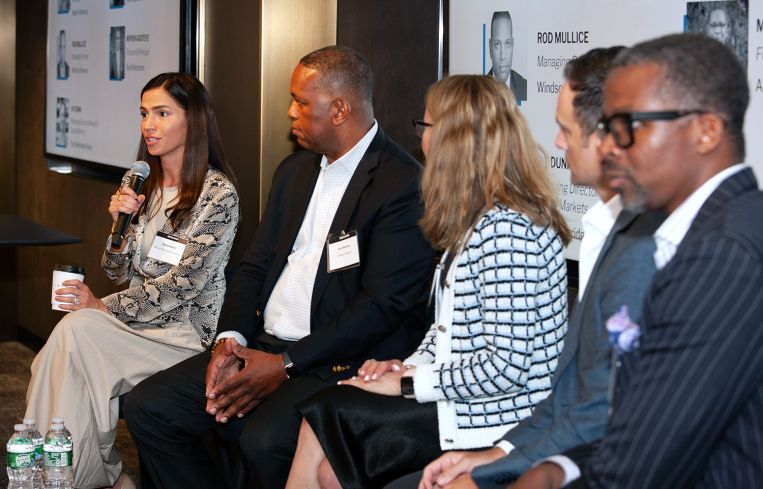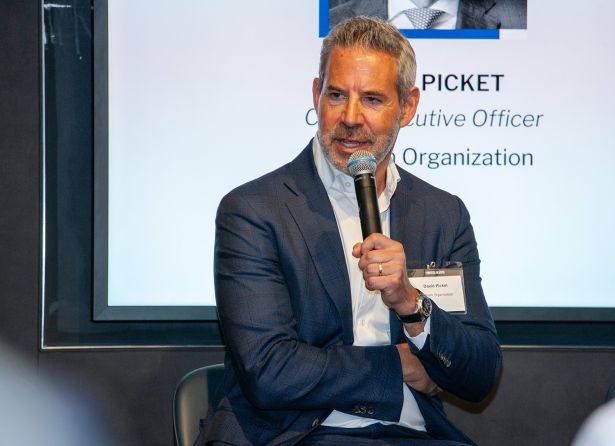How Investors and Developers Are Navigating a Touch-and-Go Multifamily Market
In New York, trends such as office conversions and the state's 485x incentive have changed things
By Mark Hallum June 20, 2024 4:24 pm
reprints
New York multifamily investors are finding ways to make headwinds in the market work for them while experimenting with the new 485x state tax incentive.
Industry leaders talked about their strategies and the obstacles they face at Commercial Observer’s second annual State of Multifamily Forum at 51 West 52nd Street on June 18, where discussions centered around where costs are preventing developers from meeting the demands of the national housing shortage and where lawmakers either have — or could — step in.
David Picket, CEO of owner and developer the Gotham Organization, broke the ice as the first speaker at the event in an interview with Max Gross, Commercial Observer’s editor in chief, discussing how insurance costs represent a particularly tough challenge for New York developers now.
“There’s a scaffold law in New York which places strict liability for any type of injury on the construction site,” Picket said. “Doesn’t matter what the laborer was doing, you know, if they didn’t tie themselves off, which is a requirement, and they fell and hurt themselves, there is strict liability to the contractor. Insurance is up across the country, but in New York, our insurance makes up about 10 percent of our construction costs. I mean, that is just outrageous, right? If we could just cut that in half, we could create a lot more housing.”
Justin Levitt, head of Northeast debt for PGIM Real Estate, moderated “Unlocking Capital: Strategies for Financing Multifamily Deals” with panelists Yisroel Berg, chief investment officer of multifamily for developer and lender Harbor Group International; Michael Lavipour, senior managing director of Affinius Capital; Michael Shmuely, managing director of capital markets for JLL; and Rob Lester, chief investment officer of property manager and investor RMR Residential.
“So what we’re tracking, and my conversations with everybody, is that there’s really two things that are going to open the floodgates, and that’s a drop in rates, which we’re going to get at some point. We can all agree that it will only be maybe one or two points, but it’s going to happen,” Lester said of the factors that will kick-start multifamily financing deals. “And then it’s rent growth.”
Victoria Gousse, senior vice president of investments at A. Walker & Company, moderated “The Big Shortfall: Addressing the Impacts of America’s Housing Shortage” with panelists Asi Cymbal, chairman of construction company Cymbal DLT Companies; Alecia Hill, vice president of real estate investment company FCP; and David Murstein, managing director at developer Fairstead.
“Our emphasis in South Florida [is] on luxury housing that we want to make more attainable, and what’s come up for us and many developers in South Florida is the Live Local Law, which is really a game-changer that allows us to artificially lower rents of market-rate housing that is at the highest level in order to attain a tax benefit, which I think is a model, or should be a model of incentive [across the nation],” Cymbal said.
Florida’s Live Local Act spurs housing growth through tax incentives, zoning changes and $811 million from the state for affordable housing programs.

David Brickman, CEO of NewPoint Real Estate Capital, and Amanda Nunnink, senior managing director of multifamily for real estate investor Kayne Anderson Real Estate, discussed challenges in the lending environment with up to $670 billion in debt coming due in the next three years.
“I think what lets me sleep at night is that the fundamentals are still really positive,” Nunnink said. “We talk about occupancy — particularly, we talk about demand for attainable and even renter-by-choice. There’s a lot of demand out there. We’ve seen incredible growth in renter households, 25 percent over 10 years for all rental households, 37 percent rental growth for households making 80 to 120 percent [of the area median income]. Those fundamentals being so strong leads me to believe that that distress is not coming.”
Aundre Oldacre, managing partner of AORA Development, moderated the following panel, “Maximizing Revenue Streams: Exploring Unique Solutions for Increased Cash Flow and Returns.” Jordan Kornberg, chief investment officer of Mast Capital, Jackie Renton, COO of Atlas Capital Group, and Manish Shah, senior managing director of Palladius Capital Management, were panelists.
“What we’ve learned from student housing is we can actually keep our vacancy down by renovating units while people are living there,” Shah said. “And we have found for the tenancy we have in these properties [under the age of 30] they’re OK with it, the person who’s there is getting an upgraded unit while they’re in it, and not getting charged for the upgrade, and it decreases our downtime.”
Myron Adoteye, founder of capital markets firm Aya Enterprises, moderated “Addressing the Dilemma: Exploring Solutions for Affordable & Workforce Housing” with Teodora Zobel, chief investment officer of Midwood Investment & Development; Maria Barry, national executive of community development banking at Bank of America; Rod Mullice, managing partner of developer Windsor Stevens; and Jay Dunn, head of capital markets for The Steinbridge Group.
“We own primarily multifamily and retail projects here,” Zobel said of New York City. “We’re in the process of building a site at the Gowanus, which is [mandatory inclusionary housing, or MIH], which is one of the programs here in the city to provide affordable housing.
“So it’s 25 percent affordable at 60 percent AMI, and then there’s a smaller portion of lower affordable as well,” she added. “We’re also working on deals under New York’s new program, 485x, and it sort of mirrors MIH in certain ways, in terms of larger projects, which is where we focus. The key difference is that they’re affordable forever, which we think is great to build stable communities in New York in the long run.”
Robin Zeigler, founder and CEO of developer Mural Real Estate Partners, moderated the panel “Diamonds in the Rough: Unveiling Profit Potential in the Distressed Multifamily Market” with Shimon Shkury, founder of Ariel Property Advisors; Elizabeth Bell, co-head of real estate for real estate investment house Hamilton Lane; Richard Debo, managing director of Artemis Real Estate Partners; and Niko Nicolaou, vice chairman of the tristate capital markets group for Cushman & Wakefield.
“There’s obviously a lot of liquidity in the market,” Nicolaou said. “So we’re seeing a lot of rescue capital, probably more so than we’ve seen in any of these other distressed situations over the years. We’re just seeing a little bit less distress, but stress on making decisions and trying to get deals across the finish line.”
Paul “Tad” O’Connor, real estate litigation partner of Kasowitz Benson Torres, moderated “Office to Multifamily Conversions: Wishful Thinking, or The Sector’s Silver Bullet?” Panelists included Chris Balestra, president of developer Taconic Partners; Ken Horn, founder of developer Alchemy Properties; and Douglas Hayden, founder of Arthroto, a firm specializing in prefabricated construction.
“We are eager to try to figure this out,” Horn said. “I mean, of course, there have been some developers that have cut cores in the middle of the building, but if you’re maxed out on [floor area ratio], where do you put that space?”
Horn cited a 400,000-square-foot office building his firm looked at that was 80 percent vacant with 40,000-square-foot plates.
“The way the architects adapted is that every floor had 8,000 feet of amenities,” he said. Ultimately, though, it didn’t happen. “The loss factor was extraordinary. It would have been great for tenants but in terms of making the economics work, it was very, very hard. So there has to be a combination of price reduction, the ability to build it affordably, and, in the vast majority of these buildings, the columns are a major issue. The loss factor is extraordinary.”
Mark Hallum can be reached at mhallum@commercialobserver.com.


